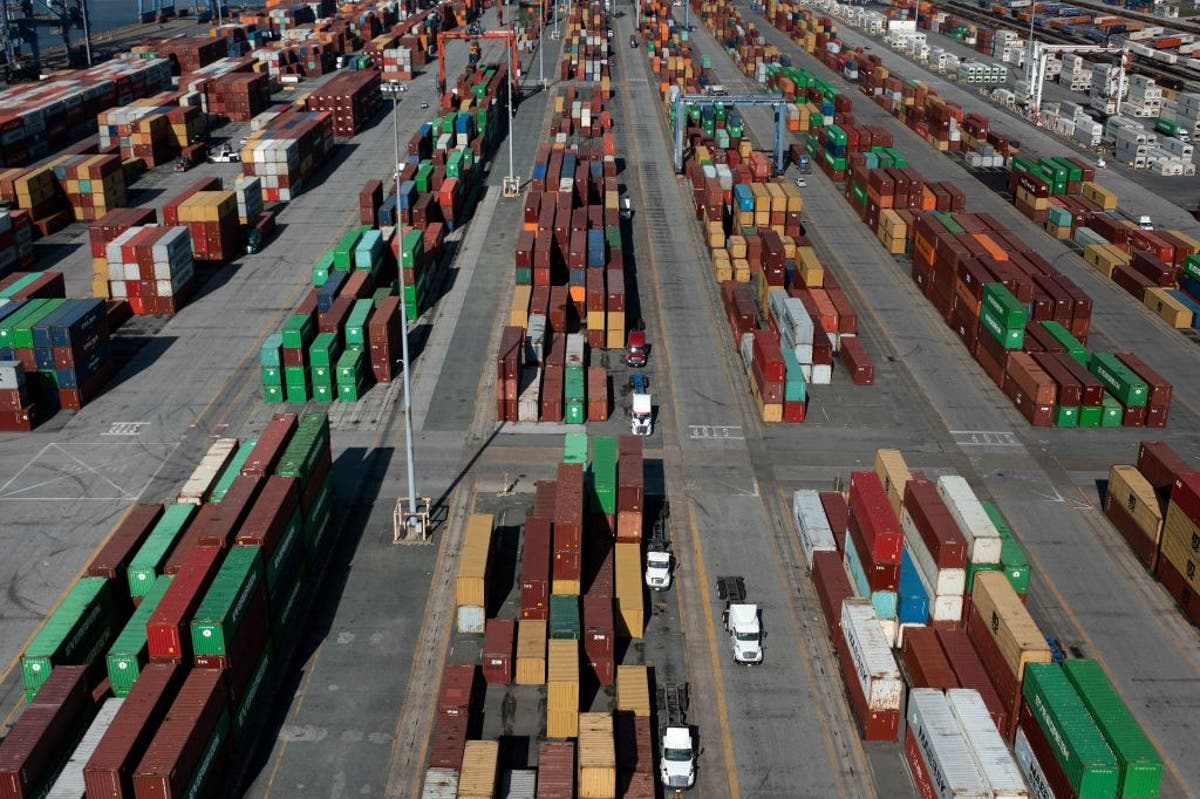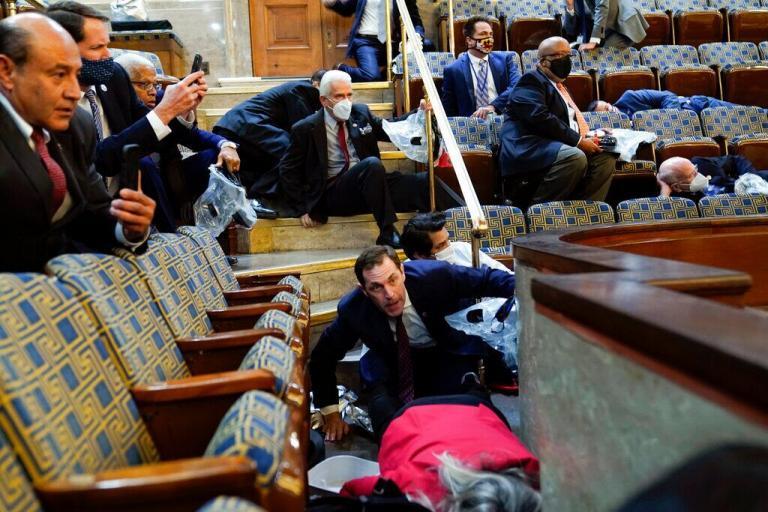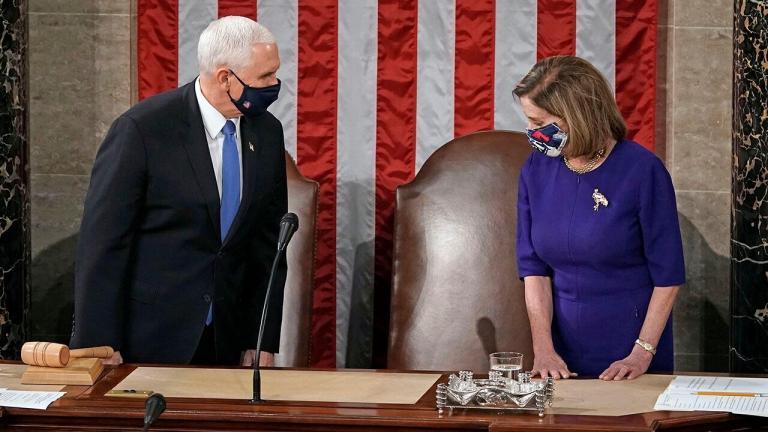Quick bit: Chain of US goods faces record volume amid historic labour shortages
Full Story:
Attention turned in Washington to the USsupply chain this week as more and more Americans have reported trouble finding some basic goods as well as items associated with the holiday shopping season.
Otherwise invisible to many Americans save for when they are passed by a truck on the highway, the flow of goods in the US is seeing rare national attention as news agencies have shown startling images of dozens of cargo ships backed up off the coasts of some of the US’s largest ports.
The problems have been ongoing for months, as many can be linked to the ongoing Covid-19 outbreak, but experts agree: The issues are getting worse, right when the US is poised for the biggest retail surge of the year.
What are the problems with the supply chain?
Simply put, there are issues in every stage of the chain, from manufacturing to the retail sector. High on the list are labour shortages, which are hitting both retail outlets such as grocery stores as well as companies that make up the shipping system, some of which have accelerated training processes to compensate.
The worst of the logjams are in California, where dozens of container ships are waiting to dock and unload cargo off the coast near the ports of Los Angeles and Long Beach. The two shipping centres are not alone, however, as transportation management firm CH Robinson told CNN Business that the delays are set to spread to “pretty much every port” in the country.
The surging price of oil adds another issue; as ships are facing longer transit times, the costs of journeys escalate compounded with oil prices that appear to be approaching $100 a barrel. This means goods not only take longer to get to store shelves or your front door but cost more when they get there; food prices in particular have been rising for several months across the US, as the industry is presented with the semi-unique problem of dealing with longer travel times for perishable goods.
Delays at ports aren’t just being caused by a lack of willing longshoremen. Many items sit for days or longer on the docks as similar labour shortages in warehouses, trucking companies, and railways force goods to go for longer without heading to stores.
As a result, every aspect of the chain is stressed right when the US is poised for a major buying season. The White House faced questions about that this week, and on Wednesday press secretary Jen Psaki said that she could not guarantee that Americans would see items arrive on time ahead of the holidays.
“We are not the Postal Service or UPS or FedEx. We cannot guarantee. What we do is use every lever at the federal government’s disposal to reduce delays,” she said.
How is Covid-19 impacting the supply chain?
The viral pandemic, now approaching its second anniversary of reaching US shores, has wildly changed the buying habits of US consumers. Many are still hesitant to eat out at restaurants or do other in-person shopping, while online shopping has exploded and overall imports have surged.
Beyond changing buying habits and driving some labour shortages in the US, the pandemic is also having more direct effects on the supply chain. A terminal at the third-busiest port in the world, the Ningbo-Zhoushan port in China, was temporarily shut down after a worker tested positive for Covid-19, causing major snarls for goods leaving the port which sends tens of billions of dollars worth of shipments to the US every year.
The White House cited that shutdown at Ningbo-Zhoushan specifically in a fact sheet this week, blaming it for making “the transportation supply chain more unstable and difficult to predict”.
Lockdowns and economic shutdowns in various countries including parts of the US have caused both supply issues and logistics issues; a McKinsey analysis last year as the first supply chain issues began amid a wave of panic-buying in America found that 48 per cent of companies surveyed in the supply chain reported logistics issues presented by workers remaining at home during the pandemic. Some 73 per cent reported problems in their “supplier footprint”.
What is the US government doing in response?
The growing concerns drew a response from President Joe Biden this week, who addressed fears about shipping delays and pledged action on a major factor in the holdups while not taking questions from reporters on how deeply the holiday season could be affected.
During his speech on Wednesday, Mr Biden announced that several US ports including the Port of Los Angeles would move to 24/7 hours, greatly increasing their capacities for daily unloading operations.
“[B]y increasing the number of late-night hours of operation and opening up for less-crowded hours when the goods can move faster, today’s announcement has the potential to be a gamechanger,” he said.
The White House formed a task force to address supply chain issues earlier this year; on Wednesday, it announced alongside the news of increased port operations in California that retail and shipping companies were working to expand their efforts to move cargo off the docks and down the US supply chain.
What else needs to be done?
While the Biden administration has moved to address bottlenecks at ports, even the White House has admitted that more action is needed across the US cargo sectors. In Mr Biden’s address on Wednesday, he called on companies including retailers and shipping companies to “step up as well”, meaning get their goods to their final destinations as fast as possible.
“[T]hese private sector companies are the ones that hire the trucks and railcars and move the goods,” he continued, while praising Walmart for stepping up shipping hours.
Some of the problems will not be solved with extra hours. The US trucking industry has faced a shortage of workers for years, a shortage now exacerbated by the Covid-19 pandemic and labour trends that have left many looking for better economic prospects. The Biden administration has offered little in the way of plans to deal with labour shortages in various US sectors beyond noting that the situation differs remarkably from the mass layoffs and job losses that occurred last year as Covid-19 hit US shores.
Transportation Secretary Pete Buttigieg and the White House have touted plans to “move the rest of the supply chain towards 24/7 operations”, in line with operations in other industrialised nations, while also encouraging the production of more goods that are the subject of scarcity, such as semiconductors, in the US.
“We need to invest in making more of our products right here in the United States,” Mr Biden said on Wednesday, declaring: “Never again should our country and our economy be unable to make critical products we need because we don’t have access to materials to make that product.”
Originally found at Read More







